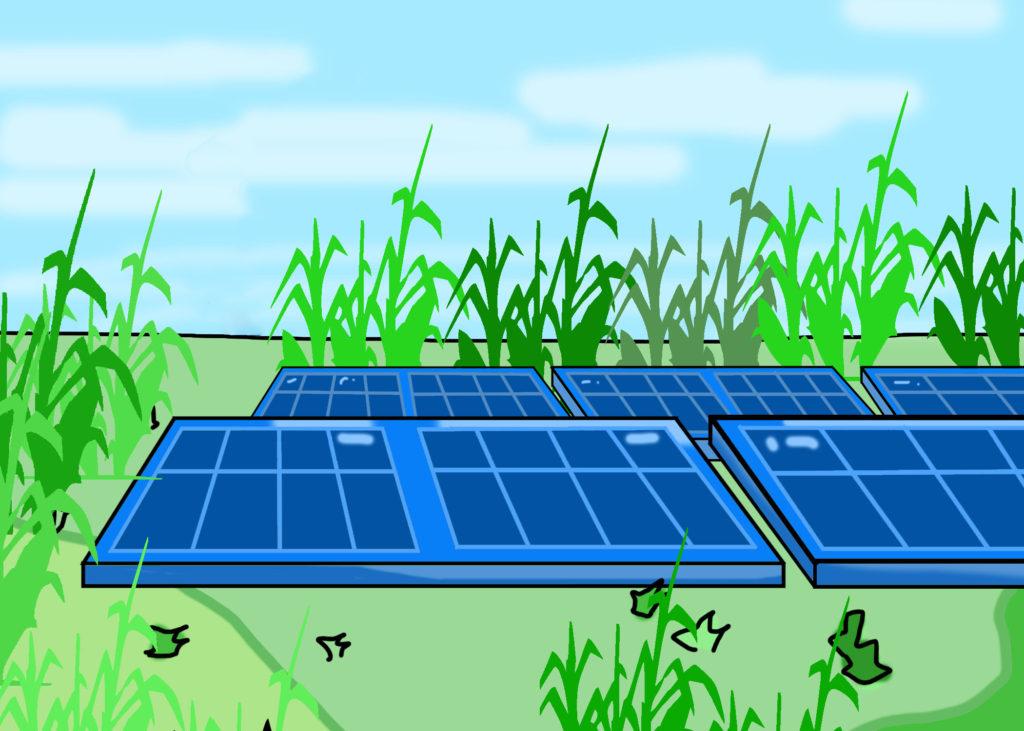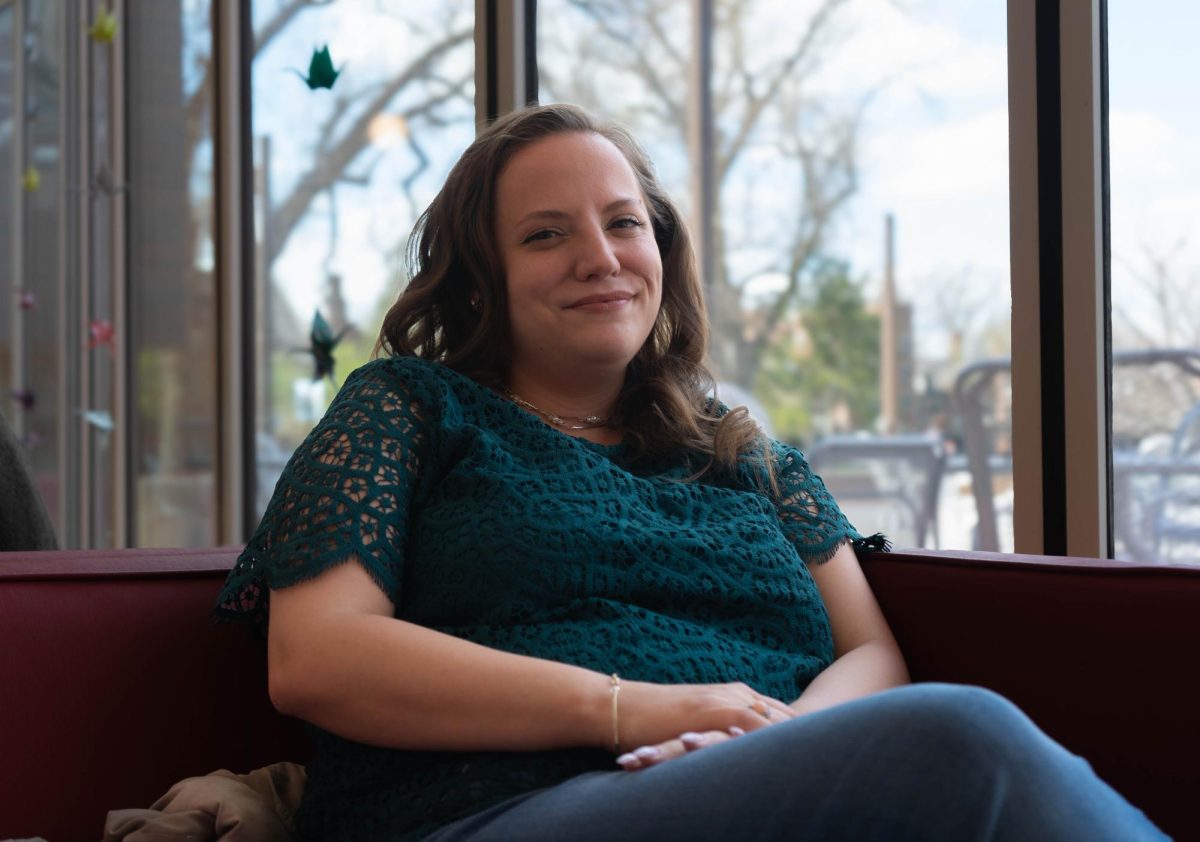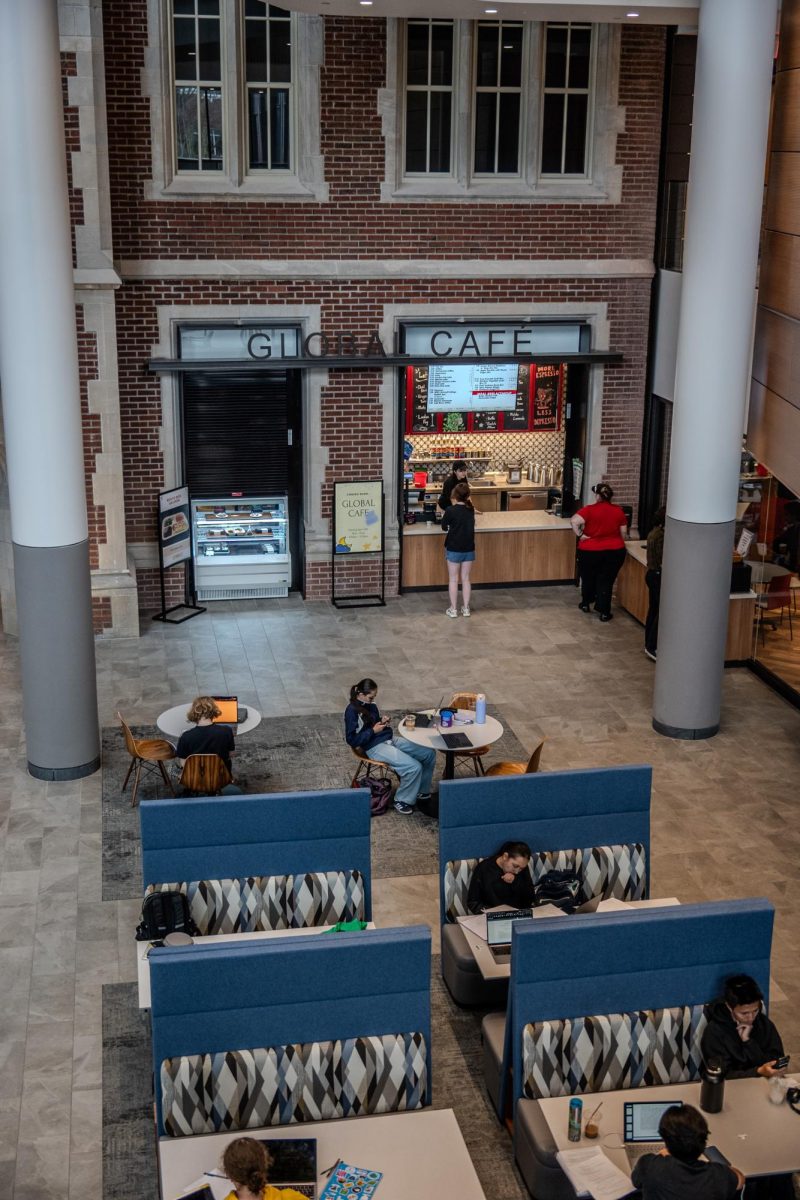By Nick Parker
parkerni2@grinnell.edu
Thanks to a 20-year purchase agreement with Trusted Energy, the College will soon begin installing over 10 thousand individual solar panels near campus. Starting in the spring of 2020, the College will be able to generate up to 30 percent of its power through solar energy.
The solar array will be built on 30 acres of farmland on the north side of 16th street, adjacent to campus. The owner of that land, Reza Kargarzadeh, will also be an investor in the project. “As soon as the crops are out of those fields, they’re going to start putting solar panels in,” said Professor Elizabeth Queathem, biology, who was instrumental in lobbying for the project.
The array is one of the first steps in the College’s plan to be carbon neutral by 2040. “Our agreement with Trusted Energy will support the college’s commitment to social responsibility by greatly reducing our carbon footprint,” said Grinnell College President Raynard Kington in a press release.
The deal with Trusted Energy, an Iowa based solar developer, comes on the heels of a failed attempt to use wind turbines to power campus. Before opting for solar, Grinnell had tried to secure a wind farm a few miles away. However, hangups on land and transport delayed the College’s ability to move forward. Eventually, a different developer bought the project.
As it stands, Grinnell currently gets much of its power from Alliant Energy. Even after the installation of the solar array, Grinnell will continue to rely on Alliant for its other energy needs. While much of the power from Alliant does come from wind turbines, including the project the College lost out on, not all of it is renewable.
The Board of Trustees was looking at more sustainable options when Trusted Energy made its pitch. If the College would invest in a solar array, the energy company would build it. Grinnell would then buy all of the energy it produced, and receive tax credits for doing so. “We were really suspicious at first. If it’s just this easy, why aren’t more people doing this?” Queathem recalled.
Upon completion, it will be the largest privately-owned solar project in the state. In addition, the solar array will also be the largest owned by any college in the country. The hope is for Grinnell to become a model for other institutions.
According to Queathem, all of this was made possible by College leadership’s willingness to embrace renewable energy alternatives. “[The lobbying process] was very simple, easy and uncomplicated,” she said.
Students on campus have also embraced the pivot to solar energy. “I do think its a great thing, we’re known for being a socially conscious school, and I think these changes do make a big difference,” said Gilberto Perez ’21. “It’s troubling when we’re always under construction, but it’s for the better. It’s nice to pay things forward when we can.”
Other students also highlighted the importance of Grinnell College being a leader in renewable energy. “I think it’s really good that colleges are switching to renewable energy, because unfortunately private institutions in this country have to do it first,” said Sunaina Butler, ’22.
When it’s all said and done, the project should help reduce Grinnell’s carbon footprint by 18 percent. It should also save the College around $3 million over the next 20 years. Other projects, such as geothermal energy used to heat the HSSC and Noyce, are just the beginning. As the 2040 deadline looms, expect Grinnell to make more moves to utilize renewable energy.
But at the moment, many are just excited that the College has made its first major step towards achieving its renewable energy goal. “I want to have a celebration in the spring,” said Queathem, “If people have ideas about how to celebrate, I would like to hear them.”





















































